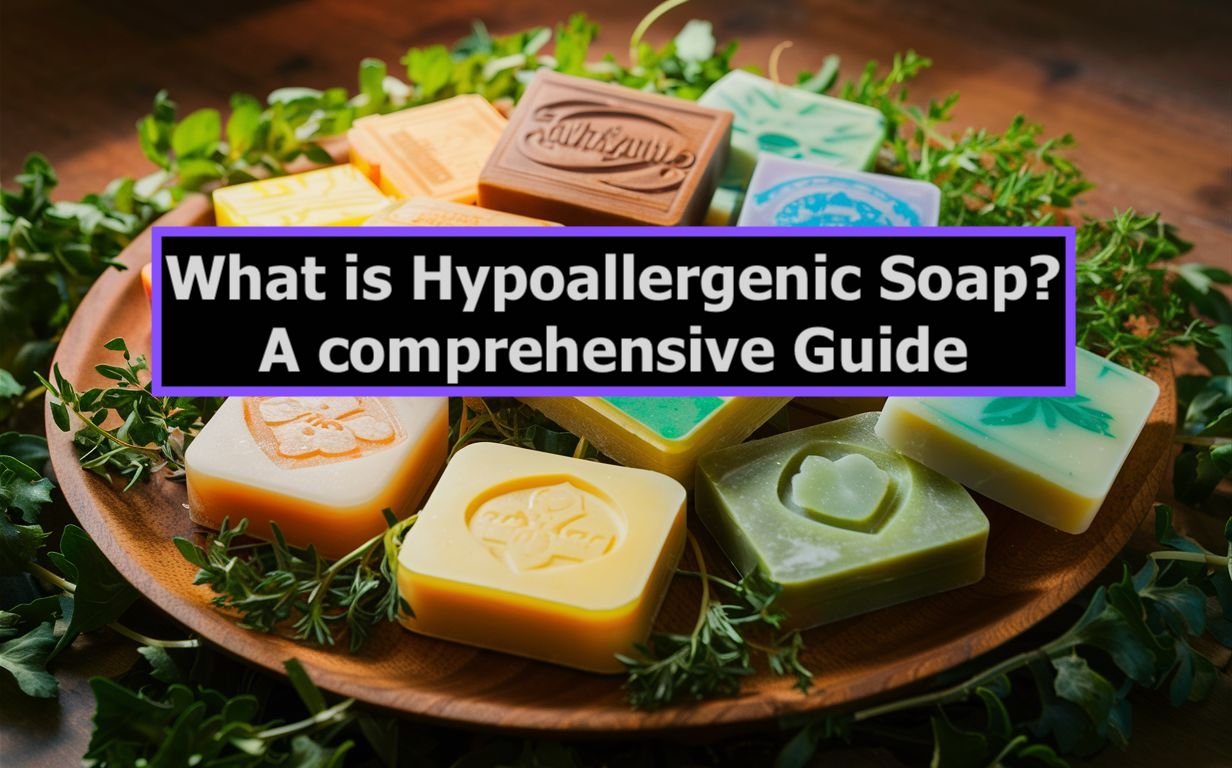is Alpaca Wool Hypoallergenic?
As more consumers look for natural and gentle fabrics suitable for sensitive skin, alpaca wool has emerged as a popular choice in the textile industry. A common question among buyers with allergies is: “Is alpaca wool hypoallergenic?” This article explores the properties of alpaca wool that might make it a preferable option for those prone to allergies, comparing it with other types of wool and examining its benefits and potential drawbacks.
Understanding whether alpaca wool can truly be considered hypoallergenic is important for anyone looking to make informed decisions about clothing and bedding materials, especially when allergic sensitivities are a concern. We aim to provide a comprehensive overview of alpaca wool’s suitability for allergy sufferers. Join us as we explain to you all you need to know about the question, “Is alpaca wool hypoallergenic?” and explore whether this luxurious material deserves a place in your wardrobe or linen closet.
Understanding Hypoallergenic Materials
To address whether alpaca wool is hypoallergenic, it’s essential to first understand what “hypoallergenic” means in the context of textiles. The term “hypoallergenic” suggests that a material causes fewer allergic reactions than others. It does not necessarily indicate that the material is allergy-proof but rather that it is less likely to provoke an allergic response.
What Makes a Material Hypoallergenic?
- Protein Structure: Allergies to animal fibers are often triggered by proteins found in the animal’s fur or feathers. The structure and amount of these proteins can affect how likely a material is to cause an allergic reaction.
- Natural Oils: Some natural fibers contain oils that can exacerbate allergies. The type and concentration of these oils play a crucial role in determining the allergenic potential of the fiber.
- Fiber Smoothness: The smoother the fiber, the less irritating it might be on the skin. Rough fibers can cause physical irritation, which might be mistaken for or exacerbate allergic reactions.
- Dust Mites and Mold: Fibers that retain moisture or trap dust more easily can foster environments conducive to dust mites and mold, both common allergens.
Common Allergens in Textiles
- Lanolin: Found in sheep’s wool, lanolin is a natural oil that can cause allergic reactions in sensitive individuals.
- Dander, Dust, and Pollen: Fibers that trap outdoor allergens or shed animal dander can be problematic for people with allergies, especially those with pet allergies such as dogs.
- Chemical Treatments: Some fabrics are treated with chemicals that can irritate the skin or emit fumes that some people find allergenic.
Understanding these factors helps in assessing the hypoallergenic properties of alpaca wool. By comparing these characteristics to those of alpaca wool, we can begin to answer the question: “Is alpaca wool hypoallergenic?” In the next section, we’ll explore the specific properties of alpaca wool that potentially make it a good choice for allergy sufferers.
Composition of Alpaca Wool

Alpaca wool, derived from the fleece of the alpaca, a native animal of the Andes Mountains, is renowned for its luxurious softness, warmth, and hypoallergenic properties. To understand why alpaca wool might be more suitable for allergy sufferers, it’s important to delve into its unique composition and compare it with that of other animal fibers.
Unique Properties of Alpaca Wool
- Lanolin Content: Unlike sheep’s wool, which contains significant amounts of lanolin, alpaca wool is naturally lanolin-free. Lanolin is a wax found in sheep’s wool that can cause allergic reactions in some people. The absence of lanolin makes alpaca wool less likely to trigger allergies, answering a part of the query, “Is alpaca wool hypoallergenic?”
- Fiber Structure: Alpaca fibers are smoother than most other animal fibers with fewer scales per inch, which makes the wool feel softer and less prickly against the skin. This smoothness reduces the likelihood of physical irritation, potentially preventing the onset of allergic reactions.
- Hypoallergenic Qualities: The fiber’s structure helps in preventing the accumulation of dust, pollen, and other allergens, making it more resistant to dust mites—a common allergen in home environments.
Comparison with Sheep’s Wool
- Protein Composition: Alpaca wool has a different protein composition compared to sheep’s wool, which is often more agreeable with human skin. This difference in protein structure is crucial as it minimizes the biological triggers for skin allergies.
- Fiber Diameter and Softness: Alpaca fibers are typically finer than those of sheep’s wool. Finer fibers mean a softer feel and less itchiness, which are common complaints associated with wool allergies.
Allergenic Potential
While no natural fiber can be guaranteed to be 100% allergen-free, alpaca wool’s unique characteristics significantly lower the risk of allergic reactions. It is important to note that “hypoallergenic” means less likely to cause an allergic reaction, not allergy-proof. Therefore, individuals with severe allergies should still test alpaca wool on a small scale to ensure compatibility with their sensitivities.
Is Alpaca Wool Hypoallergenic?
Given its properties, alpaca wool stands out as an excellent alternative for those who are sensitive to lanolin or find rougher wools irritating. The fiber’s inherent qualities make it a suitable option for a hypoallergenic fabric, aligning well with the needs of individuals seeking comfort from their clothing without the worry of allergic reactions.
Benefits of Alpaca Wool
Alpaca wool is not only potentially hypoallergenic but also boasts a range of properties that make it highly desirable for both clothing and home textiles. Let’s look at the benefits of alpaca wool that contribute to its appeal, especially for those with sensitive skin or allergies.
Natural Hypoallergenic Properties
- Low Lanolin Content: As previously mentioned, alpaca wool is naturally free from lanolin, the grease commonly found in sheep’s wool that can trigger allergic reactions in some people. This absence allows individuals who are allergic to lanolin to wear alpaca wool without experiencing irritation.
- Smooth Fiber Structure: Alpaca fibers are smoother and have fewer scales compared to sheep’s wool. This smoothness results in a softer feel that is less likely to cause the mechanical irritation associated with rougher fibers, making alpaca wool a comfortable choice for skin sensitivities.
Thermal and Moisture Management
- Superior Warmth: Alpaca wool fibers are hollow, giving them excellent thermal properties. This structure allows for lightweight fabrics that retain heat, providing superior warmth without the bulkiness typically associated with woolen garments.
- Moisture Wicking: Alpaca wool is naturally moisture-wicking, pulling sweat away from the skin and allowing it to evaporate quickly. This feature keeps the wearer dry and comfortable, reducing the risk of skin irritation from prolonged dampness.
Durability and Ease of Care
- Strength and Durability: Alpaca fibers are incredibly strong, which contributes to the durability and longevity of textiles made from this material. Alpaca wool garments maintain their shape and appearance better over time compared to those made from other fibers.
- Resistant to Dirt and Odors: The smooth structure of alpaca fibers makes them less prone to trapping dirt and odors. This resistance not only helps keep the fabrics cleaner but also extends the periods between washes, which is particularly beneficial for maintaining the integrity of the fibers and reducing environmental impact.
Environmental Impact
- Eco-Friendly: Alpaca farming has a lower environmental footprint compared to sheep farming. Alpacas are gentle on grazing land, and their wool requires less processing, which contributes to a more sustainable textile production process.
- Biodegradable: Alpaca wool is a natural, biodegradable fiber that breaks down into the soil at the end of its life cycle without leaving behind harmful residues. This property makes it an environmentally friendly choice in a world increasingly concerned with sustainability.
Is Alpaca Hypoallergenic?

Given these benefits, alpaca wool emerges as an excellent choice for individuals looking for hypoallergenic textiles. Its natural properties minimize common triggers of allergic reactions, making it suitable for allergy sufferers who need comfortable, functional, and sustainable fabric options.
Allergic Reactions and Sensitivities
Although alpaca wool is generally regarded as hypoallergenic, no natural fiber can be completely free of allergens for every individual. This section explores potential allergic reactions to alpaca wool, examines relevant research, and assesses consumer experiences to provide a well-rounded view of its hypoallergenic properties.
Potential Allergic Reactions to Alpaca Wool
- Protein Allergies: While alpaca wool is lanolin-free, some individuals may still experience allergic reactions to the proteins present in alpaca fibers. These cases are relatively rare but can occur, particularly in individuals with severe allergies to animal proteins.
- Mechanical Irritation: Despite its smoothness, alpaca fiber might still cause mechanical irritation for some people, especially if the wool is not finely spun or if the individual has extremely sensitive skin. This type of irritation is more physical than allergic and can sometimes be mistaken for an allergic reaction.
- Chemical Sensitivities: Processing treatments applied to alpaca wool, such as dyes and fabric finishes, can also lead to reactions. Individuals with sensitivities to chemicals may react to these treatments rather than the alpaca fiber itself.
Research and Studies on Hypoallergenic Properties
- Dermatological Studies: Limited studies have been conducted specifically on alpaca wool’s hypoallergenic properties. However, anecdotal evidence from dermatological tests suggests that alpaca wool, due to its unique fiber characteristics and absence of lanolin, tends to be better tolerated by individuals with sensitive skin compared to other wools.
- Comparative Analysis: Research comparing alpaca wool with other fibers often highlights its lower irritant potential, attributed to its smoother fibers and the absence of other common allergens found in more traditional wools.
Consumer Experiences
- Testimonials: Many users who suffer from allergies to other wools report that they can wear alpaca wool without any adverse reactions. These personal accounts significantly bolster claims of its hypoallergenic nature.
- Negative Reactions: It is also important to acknowledge instances where individuals have reported sensitivities to alpaca wool. These cases are useful for understanding the spectrum of reactions and preparing for potential issues.
Managing Sensitivities
For individuals interested in trying alpaca wool but concerned about potential allergies, consider the following precautions:
- Patch Testing: Conducting a patch test with a small piece of alpaca fabric before committing to a larger garment can help ascertain personal sensitivity.
- Seek Refined Alpaca Products: High-quality, finely spun alpaca products are less likely to cause irritation. Look for reputable brands that focus on hypoallergenic processes.
- Check for Chemical Treatments: Opt for naturally processed alpaca wool without extensive chemical treatments, which can be a significant factor in allergic reactions.
- Wash Before Use: Washing new fabrics can remove residual processing chemicals and lanolin (if cross-contaminated from other products) that may cause skin irritation.
While alpaca wool is generally considered hypoallergenic, particularly when compared to traditional sheep’s wool, individuals with severe allergies or sensitivities should approach with caution. By understanding the potential triggers and taking appropriate measures, most people can enjoy the benefits of alpaca wool without discomfort. The final section will explore the care and maintenance of alpaca wool to maximize its hypoallergenic benefits.
Care and Maintenance of Alpaca Wool
To preserve the hypoallergenic qualities of alpaca wool and ensure its longevity, proper care and maintenance are essential. This section provides practical tips on how to care for alpaca wool garments and textiles effectively, helping to maintain their natural benefits and minimize potential allergens.
Proper Washing Techniques
- Hand Washing: Alpaca wool is best washed by hand in cool water. Use a mild detergent that is ideally organic and free from harsh chemicals, which can degrade the fiber and potentially trigger allergies.
- Gentle Cycle: If you prefer using a washing machine, place the alpaca wool items in a mesh laundry bag and set the machine to a gentle cycle with cold water. This method prevents excessive agitation, which can cause the fibers to felt.
- Avoid Fabric Softeners: Fabric softeners and bleach should be avoided as they can coat the fibers and diminish the wool’s natural properties, including its hypoallergenic traits.
Drying and Storage
- Air Dry: After washing, gently squeeze out excess water (do not wring) and lay the items flat on a clean towel to air dry. Avoid hanging alpaca wool as it can stretch the fabric.
- Avoid High Heat: Never use a tumble dryer for alpaca wool, as the high heat can shrink and damage the fibers. If you need to remove wrinkles, use a steamer or an iron set to a low-temperature setting with a pressing cloth to protect the wool.
- Proper Storage: Store alpaca wool garments in a cool, dry place. Use cedar blocks or lavender sachets to ward off moths and other insects naturally without the need for chemical mothballs, which can trigger allergic reactions.
Periodic Maintenance
- Brushing: Periodically brush alpaca wool items with a soft-bristled brush to remove surface dust and allergens that can accumulate in the fibers.
- Refreshing: Between washes, refresh alpaca wool garments by airing them outdoors on a dry, breezy day. This helps to eliminate odors and potential allergens without the need for frequent washing.
- Professional Cleaning: For heavily soiled or delicate items, consider professional cleaning. Choose a cleaner who is experienced with handling luxury fibers like alpaca to ensure that the cleaning agents used are gentle and allergen-free.
Enhancing Hypoallergenic Properties
By adhering to these care guidelines, not only can the life of alpaca wool garments be extended, but their hypoallergenic properties can also be maximized. Proper care helps to preserve the structural integrity of the fibers and prevents the accumulation of dust mites and other potential allergens.
Conclusion
Alpaca wool’s natural characteristics make it an excellent choice for those with sensitive skin or allergies. However, maintaining these hypoallergenic properties requires thoughtful care. By following the outlined care tips, users can enjoy the comfort and beauty of alpaca wool while minimizing the risk of allergic reactions. Regular, gentle maintenance ensures that alpaca wool remains a safe, sustainable, and luxurious addition to any wardrobe or home.
FAQs: Alpaca Wool and Hypoallergenic Properties
To further enhance understanding and address common queries regarding alpaca wool’s hypoallergenic properties, here are some frequently asked questions:
1. Is alpaca wool hypoallergenic?
Yes, alpaca wool is considered hypoallergenic. It does not contain lanolin, which is a common allergen found in sheep’s wool, and its fiber structure is smoother and finer, which helps prevent irritation commonly associated with coarser wools.
2. What makes alpaca wool different from sheep’s wool in terms of allergens?
Alpaca wool lacks lanolin, a greasy substance found in sheep’s wool that can cause allergic reactions in some people. Additionally, the fibers in alpaca wool are smoother and finer, which means they are less likely to cause mechanical irritation on the skin.
3. Can people with wool allergies wear alpaca wool?
Many people who are allergic to sheep’s wool can wear alpaca wool without any adverse reactions. However, those with more severe or specific fiber allergies should still test alpaca wool on a small scale before fully integrating it into their wardrobe.
4. How should I wash my alpaca wool garments to maintain their hypoallergenic properties?
Alpaca wool should be washed gently by hand in cold water with a mild, chemical-free detergent. It should be air-dried flat away from direct heat sources to maintain the integrity of the fibers and prevent the accumulation of irritants that could reduce its hypoallergenic properties.
5. Are there any chemical treatments on alpaca wool that could affect its hypoallergenic nature?
While alpaca wool itself is hypoallergenic, some manufacturers may use chemical treatments for coloring or finishing. Always check for certifications or ask the manufacturer about their processing methods to ensure that no harmful chemicals have been used.
6. Is alpaca wool suitable for babies and individuals with sensitive skin?
Yes, due to its hypoallergenic properties and soft texture, alpaca wool is an excellent choice for babies and individuals with sensitive skin. It provides warmth without irritation, making it ideal for delicate skin.
7. How can I test if I’m allergic to alpaca wool?
If you’re concerned about an allergic reaction, conduct a patch test by placing a piece of alpaca wool fabric against your skin in a less sensitive area. Secure it with a bandage and leave it for 24 hours to see if there is any reaction.
8. What are the environmental benefits of using alpaca wool?
Alpaca wool is not only beneficial for those with allergies but also for the environment. Alpacas are more sustainable than sheep; they have softer hooves that damage the pasture less, and they eat less per pound of wool produced. Alpaca wool is also biodegradable and can be processed with minimal environmental impact.
9. Can alpaca wool prevent dust mite allergies?
Alpaca wool’s smooth fibers and moisture-wicking properties make it resistant to dust mites, which thrive in moist environments. This resistance can help reduce symptoms for individuals allergic to dust mites.
10. Where can I buy hypoallergenic alpaca wool products?
Hypoallergenic alpaca wool products can be found in specialty textile stores, online marketplaces, and directly from manufacturers that specialize in natural and organic fabrics. Look for retailers that provide detailed product information and adhere to strict processing standards to ensure the hypoallergenic quality of their alpaca wool.



